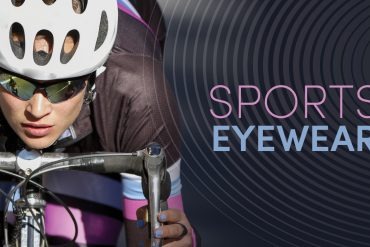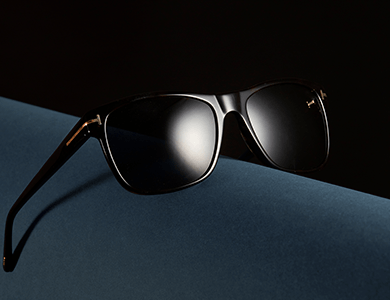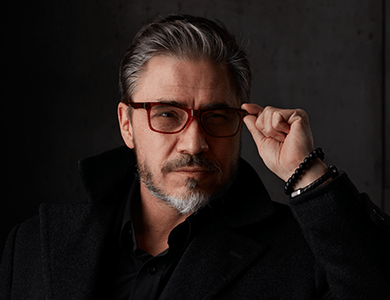
Whether you’re playing or watching the game, one incident everyone dreads is an injury. Injuries can prevent players from finishing the game, or worse, end an athletic career. Protective sports eyewear helps to prevent injuries and allows players to continue to play their sport. In today’s world, many sports facilities and fitness clubs require athletes to wear proper eye gear in order to minimize injury.
Why is it important to wear protective eyewear?
Emergency rooms treat more than 40,000 sports-related eye injuries every year, and up to 90 percent of those injuries could have been prevented by using protective eyewear. Any sport in which a ball, racquet, or other flying object is present poses a risk for injury. However, injuries can also result from close contact with others in the way of pokes or jabs with fingers and elbows. Protective eyewear is important because it keeps your eyes safe from a variety of injuries. As an additional bonus, the sharper your vision, the better you will perform in your sport of choice.
Features to look for:
Various sizes and shapes designed to fit the user.
Customized to best suit the sport including reflective lenses, space for headgear, and wrap around bands.
User’s prescription can be added to the lenses, which allows for better clarity during the game and increased overall performance.
Lenses are often made of polycarbonate, an impact-resistant material, to protect eyes from high speed and high impact objects.
Sports frames are also made of impact resistant material and often come with rubber padding where the frame comes in contact with the head or nose.
Wraparound sports glasses help to ensure the eyewear remains in place for the duration of a sporting event and prevents dust or debris from entering through the sides of the glasses.
Get the Facts
Experts agree sports-related eye injuries can be prevented by wearing protective eyewear. Parents and coaches should ensure athletes are wearing safety glasses during sporting events, especially considering 43 percent of all sports-related eye injuries occur in children younger than age 15. Regular eyeglasses are not safe to use as protective sports eyewear because they do not have impact resistance and could shatter or break upon impact.
It is imperative that protective eyewear properly fits the user. Resist the urge to buy children’s eyewear with “room to grow.” Purchasing protective eyewear too large for the user could cause eyewear to be less effective and increase the risk of injury. Additionally, be sure the user has not outgrown protective goggles as this increases the risk of injury as well.
Sports using Protective Eyewear
Badminton: sports goggles with polycarbonate lenses
Baseball/softball: batting and baserunning- helmet with polycarbonate face shield. Fielding- sports goggles or sports sunglasses with shatterproof lenses and head strap
Basketball: wraparound sports goggles
Bicycling: performance sunglasses with anti-fog and anti-scratch lenses
Fencing: full face mask made of rigid metal
Field hockey: all players- sports goggles with a head strap. Goalies- full helmets and face masks
Fishing: polarized sunglasses
Football: polycarbonate shield attached to a helmet
Hunting and shooting: polarized shatter resistant shooting glasses
Ice hockey: full face helmet
Lacrosse: form fitting and padded face mask
Paintball: full face helmet
Racquetball: sports goggles with polycarbonate lenses
Skiing and snowboarding: ski goggles or wraparound polarized sunglasses with mirror coated lenses
Soccer: sports goggles
Squash/Tennis: sports goggles with wraparound frame
Swimming and diving: swim goggles and diving masks
Volleyball: sports goggles or sunglasses
Water Polo: swim goggles with polycarbonate lenses





